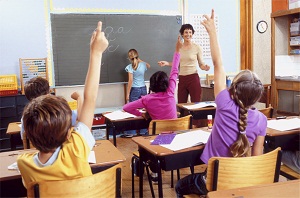Attention in learning and how to optimize attention in the classroom
What is attention?
Attention in general is understood as the ability of the brain function that influences the behavioural performance, which involve maintaining performance across a task for a long period of time (Fortenbaugh et al., 2017). It also involves switching the engagement from one stimulus to another within a very short time (a fraction of a second) (Kröse & Julesz, 1989).
Besides, attention contributes to the process of encoding information from sensory memory into working memory. Therefore, attention is essential for learning and successful cognitive functions.
(Walker, 2021)
There are two major forms of attention: passive and active. Passive attention refers to the involuntary process directed by external events that stand out from their environment, such as a bright flash, a strong odour, or a sudden loud noise. Active attention is voluntary and is guided by alertness, concentration, interest and needs such as curiosity and hunger and it involves effort (Gaddes, 1994).
Brain region responsible for attention
It is evidenced that frontal lobe is responsible for executive function of which one element is attention. The frontal lobe plays an important role in the ability to switch attentional control on changing task demands and instructions.
(Queensland Health, n.d.)
Enhance attention in classroom
- Interests focus
- - Consider students’ emotional and physical wellbeing: it is hard for anyone to pay attention when they are sad, or tired.
- - Gain initial attention (stop/ look/ listen) before giving an instruction
- - Schedule movement/ attention breaks. Include physical activity (need for stimulation and body movement for arousal). It is nearly impossible for children and adults to stay still for a very long period of time.
- - Realistic time expectations (age x 2 to 5 mins = average attention span)
- - Minimise distractions (devices, noise, visual distractions)
- - Break tasks down into smaller chunks
- - Use of timers (sense of urgency – arousal state)
- - Practice mindfulness
In summary, attention is a complicated process with many parts to it. Teachers should understand the parts of it as well as understand the students to support their needs to pay attention and learn more effectively.
References
Fortenbaugh, F. C., DeGutis, J., Esterman, M. (2017). Recent theoretical, neural, and clinical advances in sustained attention research. Annals of the New York Academy of Sciences. 1396, 70–91.
Kröse, B. J., & Julesz, B. (1989). The control and speed of shifts of attention. Vision Research. 29. 1607–1619.
Gaddes, W. H., & Edgell, D. (1994). Learning Disabilities and Brain Function: A Neuropsychological Approach. New York: Springer-Verlag.
Queensland Health. (n.d.). Brain map frontal lobe. [Image]. https://www.health.qld.gov.au/__data/assets/image/0037/447787/frontal.gif
Walker, J. (2021). Week 6 [PowerPoint Slide] https://online.melbournepolytechnic.edu.au/pluginfile.php/2437352/mod_resource/content/1/Week%206%20power%20point.pdf




Comments
Post a Comment